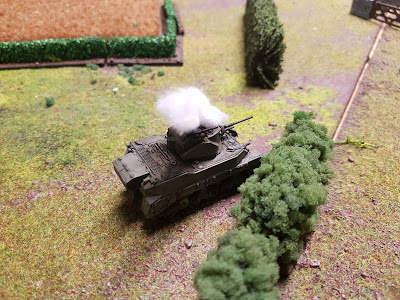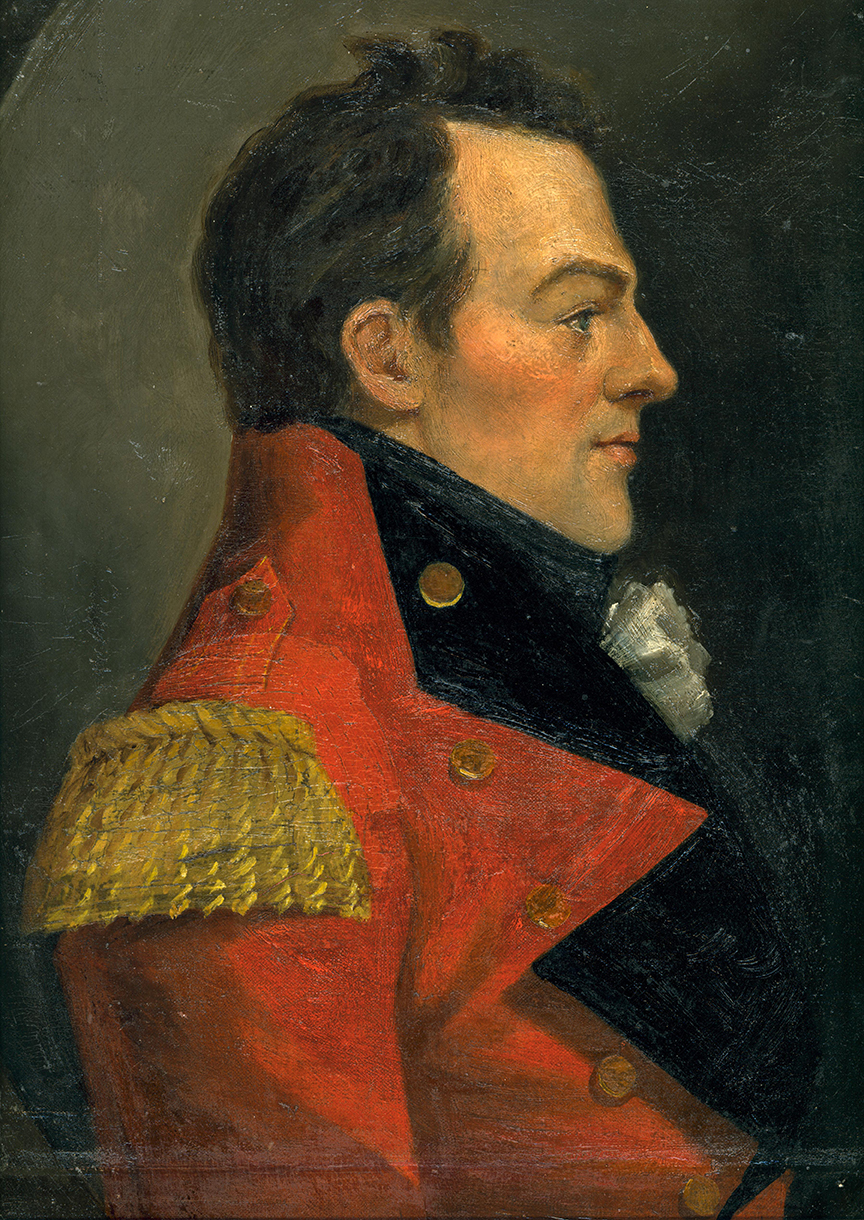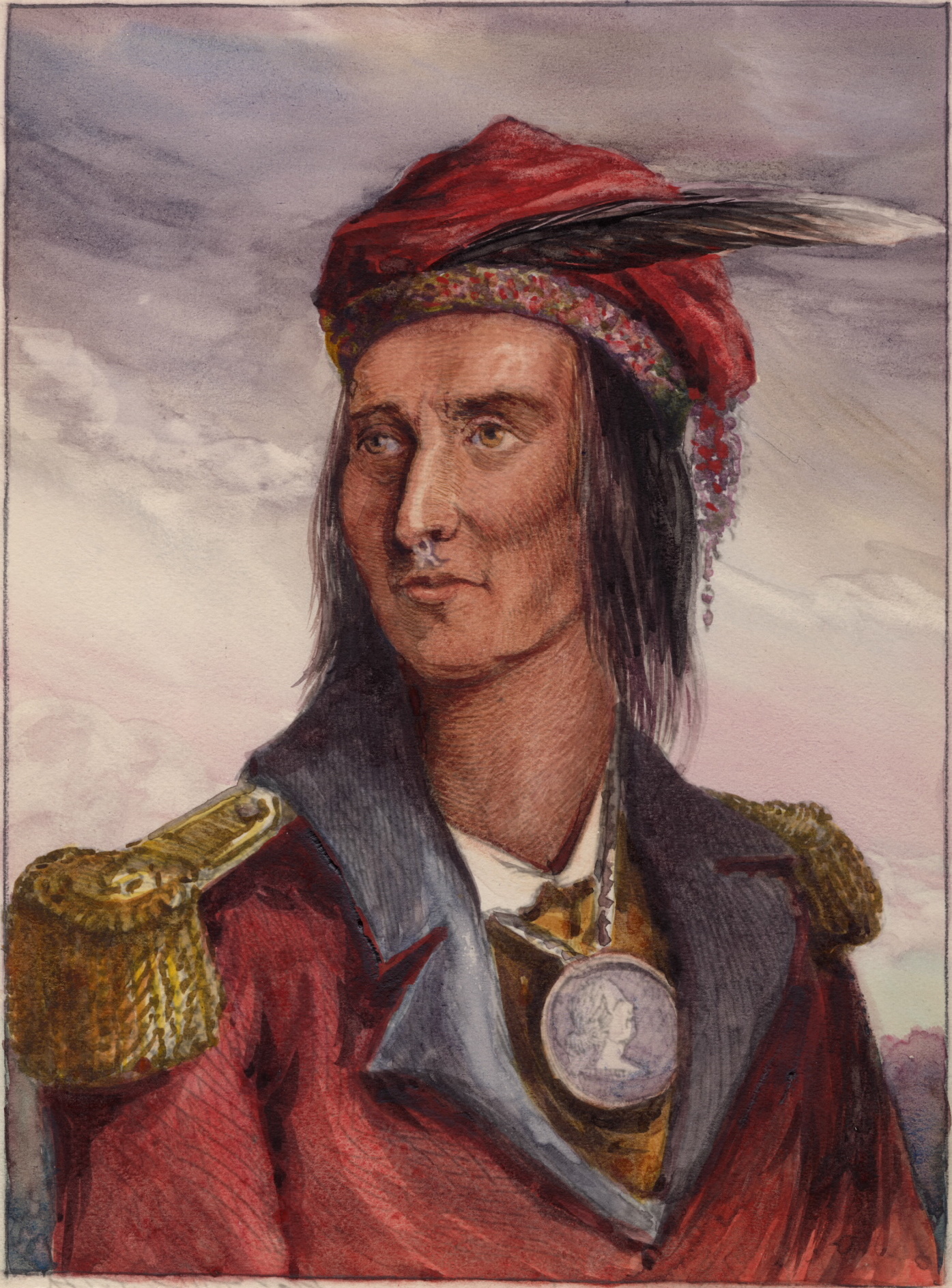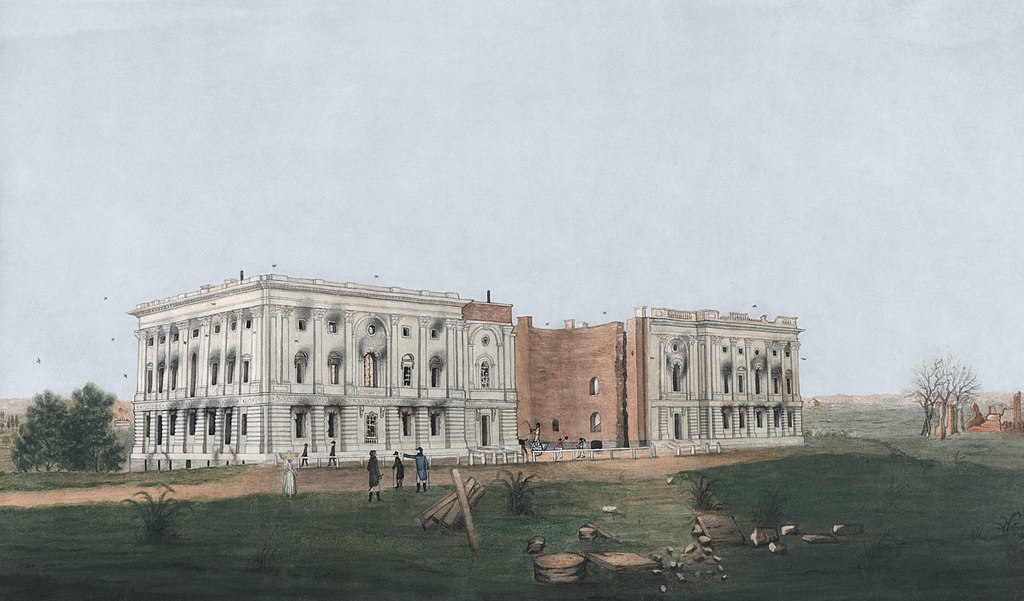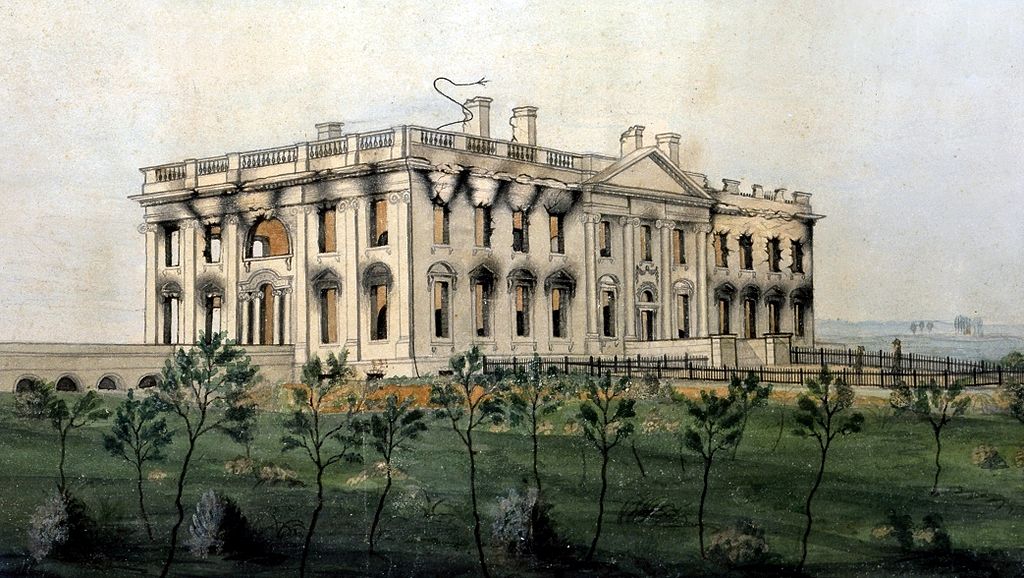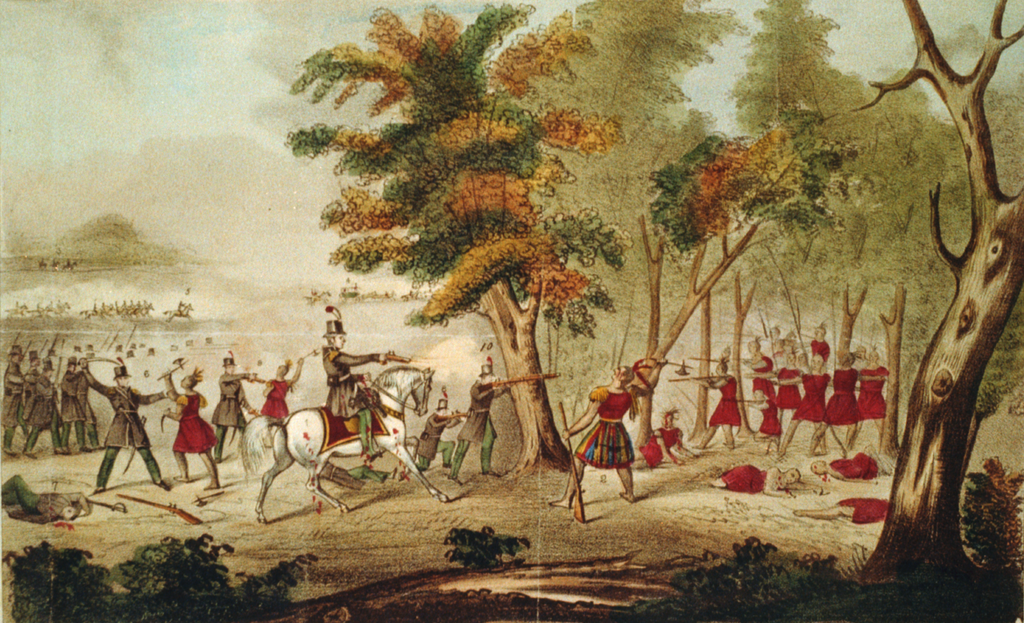Ich hatte ja unlängst über unser zweites Battlegroup
Spiel berichtet.
Dort hatte ich erwähnt, dass wir nun einmal kleinere
Szenarien testen wollten, um die Regeln besser kennenzulernen.
Sven und ich trafen uns somit zwischen zwei WM Spieltagen
und führten unsere beiden kompakten Trupps, bestehend aus 200 BG Punkten, in
die Schlacht.
Ziel: Kennenlernen der Regeln mit einer überschaubaren
Truppe.
Spielgröße: 200 Punkte. Kein Einsatz von Artillerie,
Mörsern oder ähnliches.
Spielfeldgröße: Klein 120 x 120
Szenario: Durchbruch. Abgeschnittene amerikanische
Scouteinheit muss sich durch die deutschen Linien durchschlagen und eine in der
deutschen Aufstellungszone befindliche deutsche Artillerieeinheit, die als
Missionsmarker dient, einnehmen.
Zusammensetzung der amerikanischen Einheit:
Ein Forward HQ (3 Mann) mit Spotter Funktion im Jeep
Ein Armoured Infantry Squad (Rifle Squad: 10 Mann, BAR
und Bazooka, MMG Team: 3 Mann mit .30cal MG) in einer M3 Halbkette
Ein Light Tank Platoon mit 3 leichten Stuart Panzern
Ein M8
Greyhound Spähpanzer (Armoured Car) (Scout/Mortar Spotter)
Diese Einheit kam auf eine Battle Rate von 15 Punkten.
Zusammensetzung der deutschen Einheit:
Ein Forward HQ (3 Mann) mit Spotter Funktion im
Kübelwagen
Eine Panzergrenadiergruppe (Grenadier Squad 5 Mann,
Panzerfaust + MG Team mit 3 Mann und MG 42) in einem LKW
Eine Sturmgeschütz Batterie mit 3 StuG III.
Ein Spähpanzer SdKfz 222 (Scout Mortar Spotter)
Diese Einheit kam auf eine Battle Rate von 16 Punkten.
Was ist eine Battlerate?
Die komplette Kampfkraft einer Streitmacht. Wenn ein
Spieler eine Einheit verliert, muss er aus einem Pool einen Counter ziehen.
Diese Counter haben einen Zahlwert oder sie geben ein Ereignis an. Wenn der
Zahlwert aller gezogenen Counter die Battlerate übersteigt, ist das Spiel
beendet.
Am Anfang des Spiels wurde noch die verfügbare Munition
der Panzerfahrzeuge ausgewürfelt.
Man würfelt für jedes Fahrzeug. Wirft man eine 1 hat das
Fahrzeug nur die halbe Munition dabei. Ansonsten gilt das Fahrzeug als komplett
ausgestattet.
NATÜRLICH würfelte ich bei zwei StuGs eine 1. Also halbe
Munition. Nur ein HE und nur ein AP Geschoss (Wir hatten die Munition hälftig
zwischen HE und AP aufgeteilt. HE = High Explosive = Munition gegen „weiche
Ziele“; AP = Armour Penetrating = Munition gegen „harte Ziele“).
Zu erwähnen bleibt, dass die Fahrzeuge nicht erneut
geladen werden konnten, weil es keine Munitionstransporter gab.
Das sollte noch Auswirkungen haben.
Svens Jungs gingen vollgeladen ins Gefecht. Er kennt
keine Einsen auf Würfeln.
Dachte ich.
Danach wurde gewürfelt, wie viele Einheiten aufgestellt
werden dürfen. Wir würfelten beide gut. Ich konnte direkt alle Einheiten
aufstellen. Sven behielt eine Einheit in Reserve, was jetzt aber auch nicht
weiter schlimm war.
In diesem Szenario war es so, dass der Angreifer – also
der, der ausbrechen musste – mit der Runde begann.
Dies hieß in unserem Fall, Sven war am Zug.
Seine Panzer, Halbkette und Greyhound „schlichen“ sich
vorsichtig nach vorne.
Ich konterte mit meinem Spähtrupp, fuhr den LKW in die
Sicherheit eines Hügels und ließ die Infanterie absitzen.
Eines meiner Sturmgeschütze bewegte sich auf den
Bauernhof zu, während die beiden anderen StuGs die linke Flanke sicherten.
Mein Infanterietrupp bewegte sich in Richtung des
Bauernhofes auf dem Hügel, auf der rechten Flanke geschützt durch das SdKfZ
222.
Sven konterte und besetze die gegenüberliegende Seite des
Hofgrundstücks. Auch die Stuarts rückten vor.
Mein StuG eröffnete den Schusswechsel. Der Stuart hatte
keine Chance und flog in die Luft.
Daraufhin musste Sven einen der Marker ziehen.
Wie es der Zufall so will, war das dann aber kein
Verlustpunkt, sondern tatsächlich ein Aktionscounter: Folge davon war, dass
mein StuG, das eben noch so erfolgreich getroffen hatte, in die Luft flog.
Pech. Denn das StuG war dasjenige, das zu Beginn des
eigentlichen Spiels den vollen Munitionsvorrat erwürfelt hatte.
(O.K. vielleicht war das auch der wirkliche Grund, warum
es so schnell explodierte).
Auch der zweite Stuart war ein leichtes Opfer meiner Sturmgeschütze.
Irgendwie würfelte ich auch sehr gut an diesem Abend.
Allerdings hatte der
Panzer nach diesem Treffer seine AP Munition verbraucht. Dumm. Denn es befanden
sich ja noch ein Spähpanzer und ein weiterer Stuart auf der Platte.
Am anderen Flügel bewegte sich mein MG in eine günstige
Schussposition hinter einer Hecke.
Die amerikanische Infanterie hatte die ersten Verluste.
Mein SdKfz 222 versuchte dann sein Glück bei dem
verbleibenden dritten Stuart.
Es machte zwar „Bling“, aber der Treffer prallte ab.
Keine Wirkung.
Folglich zog ich das StuG nach, das noch einen Schuss AP
Munition geladen hatte.
Sven hämmerte mittlerweile mit seinem MG in die Bocage
Hecken herein. Das brachte aber nicht wirklich was.
Ungeduldig jagte er seinen Infanterietrupp über das
offene Feld. Ein leichtes Spiel für mein MG.
Der Stuart hatte sich mittlerweile verschossen, also zog
Sven den Greyhound nach vorne.
Na und der traf dann auch.
Mein StuG hatte derweil seinen letzten AP Treffer
verschwendet. Da musste das HE Geschoss ran. Diesem fehlt natürlich die
Durchschlagskraft, aber da die beiden Panzer sehr nahe beieinander waren,
konnte man mal schießen.
Na und was soll ich sagen.
Der letzte Stuart wurde immobilisiert. Ein Glückstreffer
hatte ihm die Kette abgerissen.
Mein Versuch mit der Panzerfaust den Greyhound zu
knacken, schlug dann allerdings fehl.
Jetzt hatte ich auch gar keine Geschosse mehr mit AP
Durchdringung.
Eine Runde spielten wir noch.
Sven konnte seine Infanterie noch etwas nach vorne
bringen, und ein Treffer schaltete meinen dritten Mann des MG Teams aus, dabei
blieb es allerdings.
An dieser Stelle endete das Spiel und wir einigten uns
auf ein Unentschieden. Sven konnte zwar keinen Geländegewinn erzielen und meine
Artillerieabteilung stand unbeschadet auf dem Feld rum, aber andererseits
hatten meine Sturmgeschütze auch keine Munition mehr, und konnten somit nicht
in die weitere Schlacht eingreifen.
Das Spiel diente ja dem Zweck die Regeln zu testen. Na
und das hat dann auch wiederum sehr gut funktioniert.
Bereits nach kurzer Zeit kamen wir mit dem
Regelmechanismus klar, und das Würfeln um die Ergebnisse wurde zusehend
schneller.
Man muss bei BG ja zuerst spotten, würfelt dann um den
Treffer, danach um den Durchschlag bzw. die Verwundung und schlussendlich noch
eventuelle Deckungswürfe. Das gelingt jedoch sehr gut, weil die Tabellen jetzt
nicht so komplex sind.
Hilfreich sind auf jeden Fall die Fahrzeugkarten, die für
Battlegroup erhältlich sind. Müsste man da immer im Regelwerk nachblättern,
würde das den Prozess verzögern. So hat man die Einheitenkarten direkt neben
sich am Spielfeld liegen und mit einem Blick hat man die Werte erfasst.
Natürlich kann man sich so etwas auch selbst basteln, aber man muss ja nicht
immer das Rad neu erfinden.
In unserem nächsten Spiel werden wir sicherlich noch die
Aufstellung um eine Ari Einheit erweitern. Sei es Mörser, On oder
Off-Board-Artillerie.
Den Spielmechanismus wollen wir auf jeden Fall weiter testen.
I
recently reported about our second Battlegroup game.
There I
mentioned that Sven and I myself wanted to test smaller scenarios to become
familiar with the rules.
So we
met between two Soccer World Cup matchdays in June and led our two compact
squads, consisting of 200 Battlegroup points, into battle.
Goal: To
test rules with a manageable army.
Game
size: 200 points. No use of artillery, mortars or similar weapons.
Playing
field size: Small; 120 x 120 m
Scenario:
Breakthrough. A cut-off American scout unit has to penetrate the German lines
and occupy a German artillery unit, which serves as a mission marker in the german
deployment zone.
Composition
of the American unit:
Forward
HQ (3 men) with spotter function, Jeep
Armored
Infantry Squad (Rifle Squad: 10 men, BAR and Bazooka, MMG Team: 3 men with
.30cal MG) in a M3 halftrack.
Light
tank platoon with 3 Stuart Light tanks
M8
Greyhound Armored Car (Scout / Mortar Spotter)
Battle
Rate of 15 points.
Composition
of the German unit:
Forward
HQ (3 man) with spotter function, Kübelwagen
Panzergrenadiergruppe
(Grenadier Squad 5 men, Panzerfaust + MG team with 3 men and MG 42) in a truck
Assault
Gun battery with 3 StuG III.
Scout
tank SdKfz 222 (Scout/ Mortar Spotter)
Battle
Rate of 16 points.
What is
a “Battle Rate”?
The
complete combat power of a force, represented with combat points. If a player
loses a unit, he must draw a counter from a pool. These counters have a number
value or they indicate an event. If the count of all drawn counters exceeds the
Battle Rate of an army, the game is over.
At the
beginning of the game, we had to throw the dice. The available ammunition of
the armored vehicles was to check.
You roll
the dice for every vehicle. If you throw a 1, the vehicle has only half the
ammunition. Otherwise,
the vehicle is considered fully equipped.
Of
course, I diced at two StuGs a 1. Result: Half ammo. Only one HE and only one
AP projectile (We had split the ammo halfway between HE and AP; HE = High
Explosive = ammunition against "soft targets"; AP = Armor Penetrating
= ammunition against "hard targets").
It
should be noted that the vehicles could not be reloaded because there were no
ammunition transporters.
That
should still have effects.
Sven's
boys went into action fully loaded. In his world a 1 on a dice, doesn’t exist.
That’s
what I thought before we started the game.
Then we
diced, how many units would appear on the battlefield. We both diced well. I
was able to set up all units directly. Sven kept one unit in reserve, which was
not bad now.
In this
scenario, the attacker - the one who had to break out - started the round.
This
meant in our case, Sven started.
His
tanks, M 3 Halftrack and Greyhound cautiously "crept forward".
I
countered with my SdKfz 222, drove the truck into the safety of a hill, and had
the infantry dismounted.
One of
my assault guns moved towards the farm, while the other two StuGs secured the
left flank.
My
infantry squad moved towards the farm on the hill, protected on the right flank
by the SdKfZ 222.
Sven reacted
and occupied the opposite side of the yard property.
The
Stuarts made a move forward.
My StuG
opened the firefight. The first Stuart had no chance and was destroyed.
Sven
then had to draw one of the markers from the counter pool.
As luck
would have it, it was not a loss point, but an action counter: as a result, my
StuG, which had just hit so successfully, blew up in the air.
So bad.
Because
that StuG was the one with the full ammunition supply.
(O.K.;
maybe that was the real reason why it exploded so fast).
The
second Stuart was also an easy victim of my assault guns. Somehow, I also diced
very well that evening. However, the tank had run out of AP munition after this
hit.
Damned,
I thought.
Because
there were still the Greyhound and another Stuart on the battlefield.
On the
other flank, my MG team moved into a favorable shot position behind a Bocage hedgerow.
The
American infantry had the first losses.
My SdKfz
222 then tried its luck with the remaining third Stuart.
It did
"Bling", but the hit bounced off. No effect.
So I
retraced the StuG, which had loaded yet another shot of AP ammunition.
Sven
meanwhile hammered his MG shots into the Bocage hedges. But that did not really
help.
He
impatiently chased his infantry squad across the open field.
No
problem for my MG.
The
Stuart ran out of ammunition, so Sven pulled the Greyhound forward.
Well and
the Greyhound hits.
My StuG
had meanwhile wasted his last AP shell. So I have to use the HE round.
This, of
course, lacks the punch, but since the two tanks were very close together, I
was able to shoot.
Well;
and what should I say.
The last
Stuart was immobilized.
A lucky
hit had demolished the track.
My
attempt to crack the Greyhound with the Panzerfaust, then failed.
Now I
did not have any more bullets with AP penetration.
So we
played the last round.
Sven brought
his infantry forward, and a strike knocked out one soldier of my MG team, but
it stayed that way.
At this
point the game ended and we agreed on a draw. Although Sven could not gain
ground and my artillery section was undamaged on the field around, so, on the
other hand, my assault guns had no more ammunition, and thus could not
intervene in the further battle.
The game
served the purpose of testing the rules.
After a
short time we got along with the regulation mechanism, and the dicing for the
results became more and more faster.
In BG you
have to spot the enemy, then to roll the hit, then to punch through or wound
and finally to do any cover rolls. But that works very well because the charts
are not that complex.
Definitely
helpful are the vehicle cards that are available for Battlegroup. That is much
better, than to search in the rulebook , because that would delay the process.
In our
next game we will certainly expand the lineup with an artillery unit. Be it a
mortar, on-board or off-board artillery.
We
definitely want to test the game mechanism further on.























